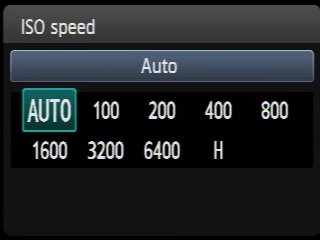If you have a Canon DSLR and want it to be even cooler than it already is, Magic Lantern has got you covered – and at for FREE. ML started development and release in 2009 and has grown in leaps and bounds since they first started coding. What was once a risky, potentially warranty-voiding install has transformed into a worldwide celebrated expansion to the capabilities of DSLR shooting.
I had first seen Magic Lantern about a year or two ago and was impressed by two things – it had a programmable intervalometer and it had expanded options for ISO settings that filled a lot of gaps for lower level DSLRs like the t2i or t3i. Like many softwares, it was a work in progress and I refrained from any installs due to a general lack of need and the fact that I heard reports of the intervalometer being a little buggy at times.
Fast forward about 12-15 months and I figured that a lot of those bugs would be worked out. I figured right.
My experiences noted below are based on running Magic Lantern v2.3 on the Canon t3i.
Applicable Cameras
Not all of the Canon EOS DSLR models work with the Magic Lantern software. I believe that the list is growing all the time but at the time of writing this blog, the following cameras can utilize Magic Lantern: 5DmII, 50D, 60D, t1i, t2i, t3i, and t3. It looks like future releases will cover the 5DmIII, 7D, and t4i.
Download and Install
Having never completed this process before, I allocated a decent amount of time to make sure I got everything right. As it turns out, I can’t really think of any of way that the install process could have been any easier or faster unless Canon had shipped the camera with ML already installed. Even with the extra time I take to be careful when trying something new, this process probably still took less than five minutes. If I ever had to do it again, it would probably take about two minutes.
Basic steps:
- format a fresh card in camera
- download zip file of ML software
- unzip and transfer the ML contents to the media card
- insert the card into the camera
- update camera software from the camera’s menu options
ISO Options
Anyone with the lower end (entry-level) Canon DSLRs will recognize the standard options for ISO. With Magic Lantern, they’ve unlocked the options for various ISO intervals that otherwise would only be available on more expensive models.
Magic Lantern’s ISO settings include:
- 100
- 160
- 200
- 320
- 400
- 640
- 800
- 1250
- 1600
- 2500
- 3200
- 6400
Precision Color Temperature
While it’s possible to set a custom white balance for the Canon Rebel DSLRs, the process is a little more undesirable and off-putting than most users would prefer. With that, for quick col0r temperature settings – the average user is left with a small handful of options. Magic Lantern allows the user to dial in the specific numerical value for their desired setting – which is not only good for maintaining a greater level of control of your images but also perfect for fine tuning color temperature related visual effects.
Expanded Bracketing Options
One of the things that I’ve always liked about Nikon DSLRs over Canon is that fact that most of their cameras feature a five image bracketing set whereas Canon utilizes only three. When it comes to shooting for HDR compositing, more photos will translate into smoother blending, more dynamic range, and a better end result. Magic Lantern now expands Canon’s potential by offering two options: either a controllable expanded set of bracketing shots up to 9 actuations per set – or an unlimited number of actuations where the number of exposures taken is determined by an in-camera ML frame analysis (it shoots as many shots or as few as it determines to be needed). This is exciting news for anyone into HDR photography.
HDR Video
Magic Lantern enables an HDR video process of sorts. This seems to be one of the newer features – so rightfully not without its drawbacks. There seem to be issues with ghosting and also has limitations with speed of movement within the frame due to merging multiple tracks. The process for the HDR takes two tracks of different ISO settings – this also means that if you push it too far, you might be mixing some seriously noisy high ISO footage into the final video. It’s best to do your homework on this feature – definitely don’t an overly simple plug and play execution. A Magic Lantern forum member created a tutorial on working with ML HDR. You can check it out here.
Another option for use with Magic Lantern’s HDR footage is an After Effects plugin called Ginger HDR. A quick view of their tutorial example video makes it seem a lot easier and intuitive.
CinemaScope Crop Markers
Although I have yet to explore many of the customizable settings of Magic Lantern – something programmed in that I love is the cinemascope aspect ratio crop marks and masking. It records the full image but for framing up a 2.4:1 aspect ratio shot – this feature is pure gold. Almost all of my final outputs are 2.4:1 as it’s one of the native aspect ratios for the RED Epic – so I like to keep things consistent – especially if I ever need to mix DSLR with RED footage. A big thumbs up on this feature.
Formatting Media Cards
One thing that’s a bit of a disadvantage of Magic Lantern is that it slows down the formatting of media cards. When entering into the “Format Card” menu option, ML indexes all of the files before allowing any options to be executed (even “Cancel”). This doesn’t add a lot of time but if you are shooting footage or stills pretty hardcore and need to format a card in the field – an extra ten to fifteen seconds can feel like an eternity. Also, after formatting the card, the camera needs a few seconds to restore all of the Magic Lantern firmware files to the camera so it can continue to run ML properly. If you plan accordingly for these minor delays, the inconvenience is extremely minimal.
I’m still exploring the various features of Magic Lantern and will update this entry as it goes. My impression so far is one of overwhelming approval. Not only do I recommend installing this free upgrade for your camera – but I also encourage you to donate or support the folks at Magic Lantern however you can. They’re doing great work.
(5 out of 5 stars)

